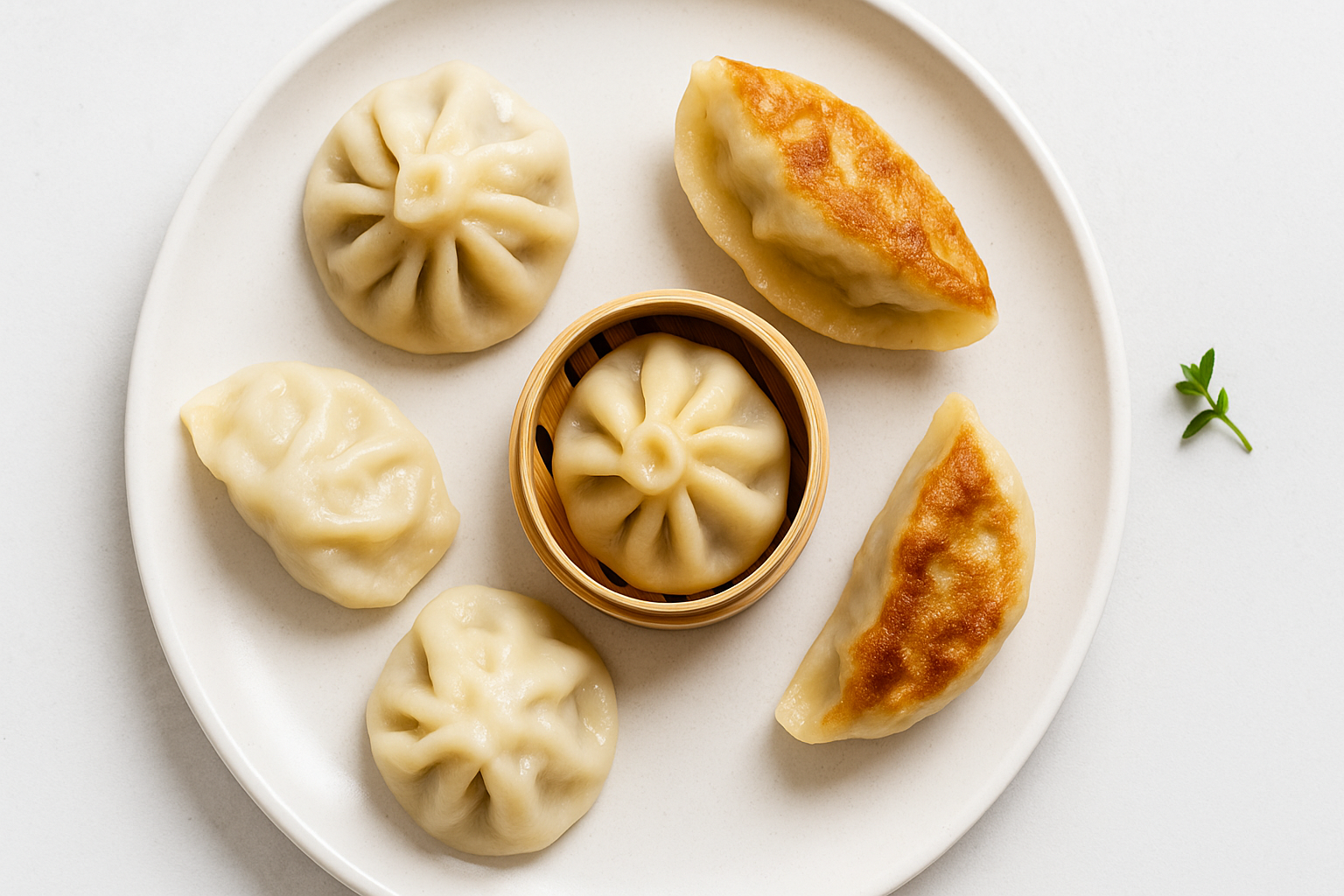Dumplings are one of those foods that make everyone smile. From delicate har gow in bamboo baskets to soft pierogi or Japanese gyoza, these little parcels of comfort are found in kitchens all over the world. But as they grow in popularity, questions about nutrition keep bubbling up: Are dumplings healthy? How many calories do they actually contain? And can you eat them while staying on track with your health goals?
The truth is, dumplings can be both wholesome and indulgent — it all depends on what’s inside and how they’re cooked. Let’s break down the nutrition facts and explore how dumplings can fit into a balanced, modern diet.
Calories in Dumplings
The calorie count of a dumpling depends on the filling, wrapper, and cooking style. On average, a serving of five dumplings (around 100 grams) ranges between 160 and 300 calories.
Steamed pork dumplings sit around 200–220 calories, while pan-fried versions climb to 250–280 due to absorbed oil. Steamed vegetable dumplings are the lightest at 160–180 calories, and shrimp dumplings usually hover near 180–200 calories. Boiled dumplings are similar to steamed ones but can feel heavier because of water absorption.
In short, each dumpling contains roughly 35–60 calories. A typical plate of ten offers about 400–500 calories — similar to a sandwich or a small bowl of noodles. If you’re calorie-conscious, steamed dumplings are your best choice, followed by boiled ones. Pan-fried dumplings are fine occasionally — just balance them with greens or soup, as discussed in Boiled vs Steamed vs Pan-Fried Dumplings: Which One’s Actually Healthier?.
Are Dumplings High in Carbs?
Yes — but not excessively. Dumpling wrappers are made from wheat flour, so they’re naturally a source of carbohydrates. A serving of five dumplings usually provides 20–25 grams of carbs, roughly the same as half a cup of rice.
That’s moderate when part of a balanced meal. The real issue is what you eat alongside them. Pairing dumplings with rice, noodles, or sugary sauces quickly increases your carb intake. Instead, enjoy them with sautéed greens, cucumber salad, or light soups.
If you want to lower carbs, you can use thinner wrappers or even vegetable-based wraps made from cabbage or lettuce. Some of these techniques are covered in How to Make Perfect Dumplings: Common Mistakes and Expert Tips, where you’ll also find advice for achieving perfect texture without excess dough.
Are Dumplings High in Protein?
Dumplings can actually be a solid source of protein — it depends on the filling. A serving of five dumplings provides around 10–14 grams of protein, roughly the same as two eggs or a small chicken breast.
Protein-rich fillings such as shrimp, lean pork, or chicken are great for muscle recovery and satiety. For vegetarians, tofu or edamame dumplings deliver plant-based protein and extra fiber.
We explored this shift toward healthier, plant-forward fillings in The Rise of Plant-Based Dumplings: Delicious, Sustainable, and Healthy. Mixing tofu with greens like spinach or bok choy adds nutrients without sacrificing flavor.
How Much Fat Is in Dumplings?
Fat levels depend mostly on the filling and cooking method. Steamed and boiled dumplings contain 6–8 grams of fat per serving, while pan-fried ones can have double that due to added oil.
Pork dumplings naturally have more fat, whereas chicken or shrimp options are leaner. If you’re making dumplings at home, swap pork belly for minced chicken or prawns, and use mushrooms to create a juicy texture without extra fat.
For a lighter pan-fried version, try the “steam-fry” method featured in The Secret to Perfect Pan-Fried Dumplings, which gives you the crisp finish without soaking in oil.
Are Dumplings High in Sodium?
Not inherently — most sodium comes from dipping sauces, not the dumplings themselves. Soy sauce, for example, can double your sodium intake in a single meal.
To reduce salt, use low-sodium soy sauce or mix rice vinegar with chili and garlic for flavor. Homemade sauces using lime juice, sesame seeds, or fresh herbs also keep meals flavorful without the sodium overload.
The Healthiest Way to Eat Dumplings
Eating healthily doesn’t mean giving up dumplings. It just means making smarter choices. Steam or boil instead of frying, use lean protein and veggies, and be mindful with sauces.
A serving of six to eight dumplings is a healthy portion. Combine them with vegetables or broth for a more filling, balanced meal. Making them at home gives you full control — you can even use whole wheat wrappers and lighter fillings.
If you want to perfect your technique, revisit How to Make Perfect Dumplings: Common Mistakes and Expert Tips for folding and cooking advice straight from our kitchen.
Are Dumplings Healthy Overall?
Yes — when made thoughtfully, dumplings can absolutely fit into a balanced lifestyle. They’re a great example of food harmony: carbohydrates for energy, protein for repair, and small amounts of fat for flavor and satisfaction.
Steamed dumplings filled with vegetables and lean meat are among the healthiest comfort foods around. Fried or deep-fried versions, while delicious, are better for special occasions.
We dive deeper into this topic in Are Dumplings Healthy? A Dietitian Explains the Truth About Your Favourite Comfort Food, where we discuss how portion control and cooking choices can transform a treat into a nourishing meal.
The Bottom Line
Dumplings prove that healthy eating doesn’t have to mean giving up comfort. By choosing smart fillings, moderating your portions, and being selective with sauces, you can enjoy dumplings guilt-free.
When folded with care and cooked with intention, dumplings aren’t just delicious — they’re balanced, satisfying, and perfectly aligned with a healthy lifestyle.
